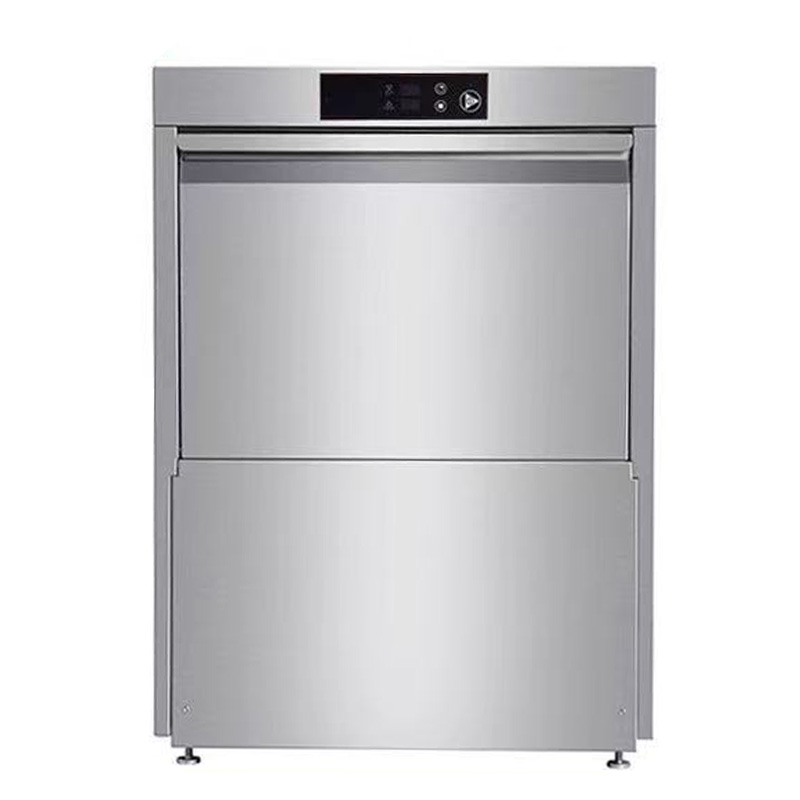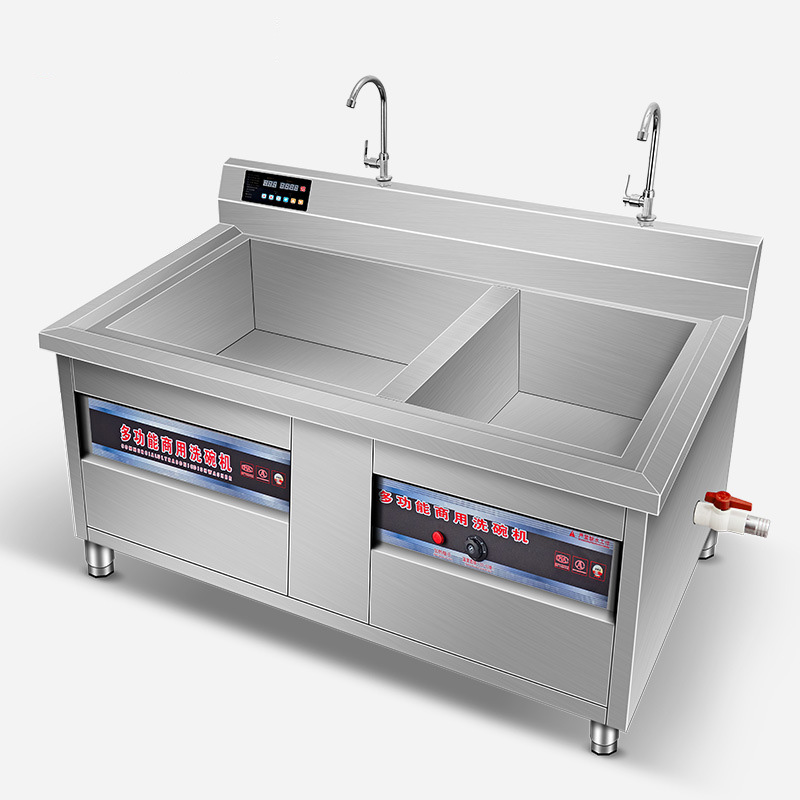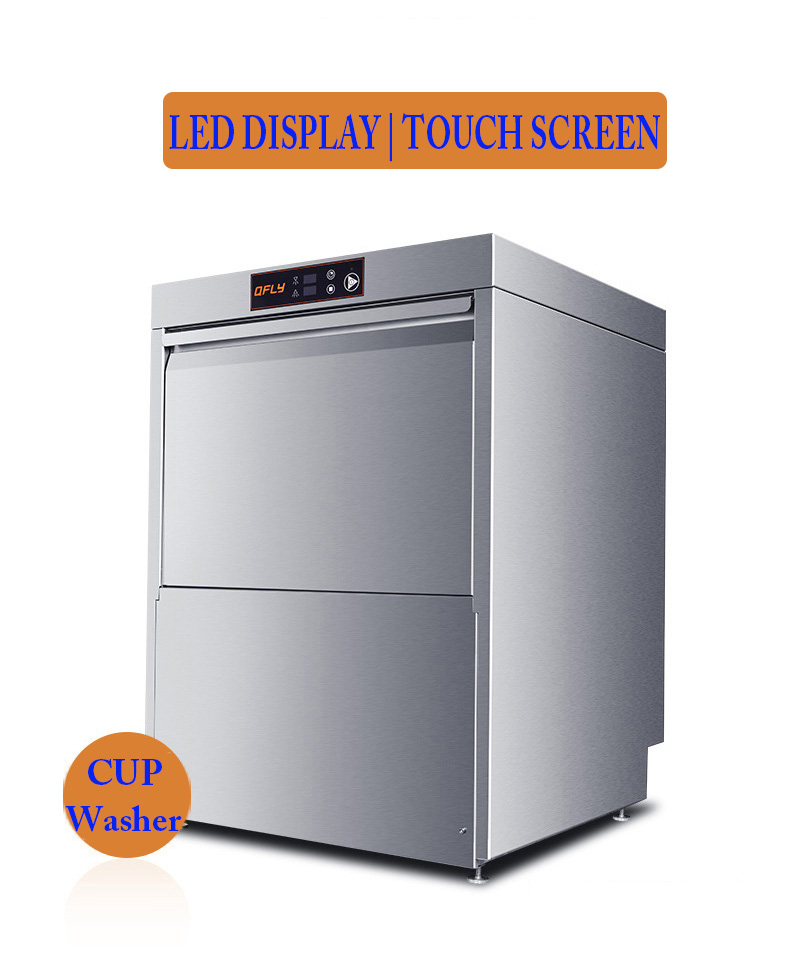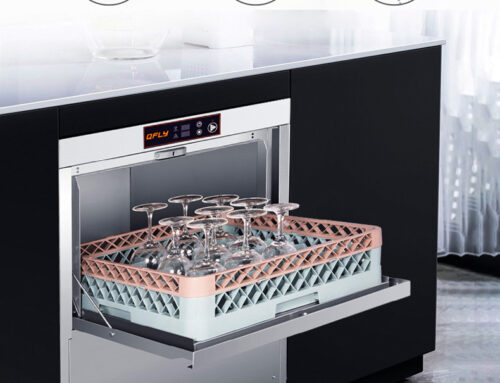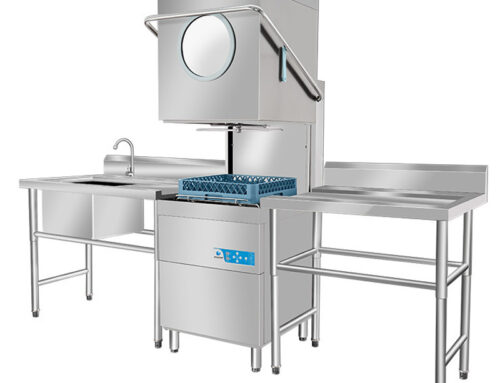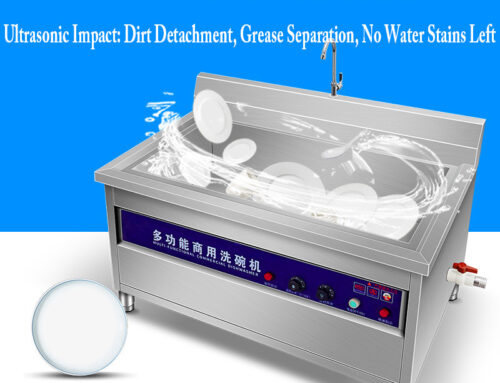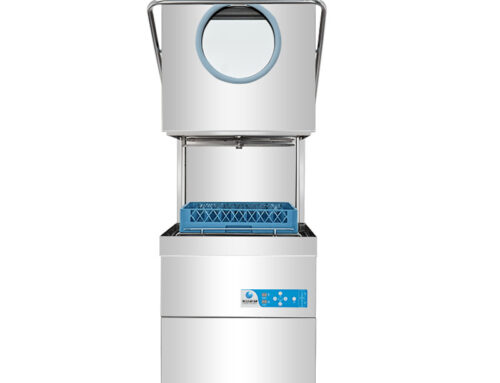What Is the Difference Between Door-Type, Conveyor, and Undercounter Commercial Dishwashers?
Choosing the right commercial dishwasher means understanding the unique needs of your kitchen—and that starts with knowing the difference between the three main types: door-type, conveyor, and commercial dishwasher undercounter models. Each is designed for specific volume levels, kitchen sizes, and dish types—from small bar glassware (perfect for undercounter commercial dishwasher units) to hundreds of racks per hour (for conveyor systems). At AT Cooker, we specialize in commercial undercounter dishwasher models (like our best-selling ZFGT-A2D series) and partner with top brands for door-type and conveyor options. In this guide, we’ll break down how each type works, their key strengths, and which one fits your business—with a focus on the space-saving, efficient commercial dishwasher undercounter designs we’re known for.
Core Differences Between the Three Commercial Dishwasher Types
| Feature | Door-Type Commercial Dishwasher | Conveyor Commercial Dishwasher | Undercounter Commercial Dishwasher |
|---|---|---|---|
| Throughput (Racks per Hour) | 60-100 | 150-400 | 30-60 |
| Space Requirement | Medium (40-60 sq. ft.) | Large (100+ sq. ft.) | Small (10-15 sq. ft. under counter) |
| Loading/Unloading | Manual (staff loads/unloads racks) | Automatic (conveyor moves racks) | Manual (compact loading, 1-2 racks at a time) |
| Water Use per Rack | 1.0-1.5 gallons | 1.2-2.0 gallons | 0.5-0.8 gallons (lowest) |
| Energy Use per Hour | 8-10 KW | 12-18 KW | 6-9 KW (lowest) |
| Ideal For | Medium-volume restaurants (40-100 seats) | High-volume venues (100+ seats, buffets) | Small kitchens, bars, cafes (10-40 seats) |
| Key Strength | Flexibility for diverse dish types | Speed and high throughput | Space-saving, low utility costs |
Door-Type Dishwashers: Manual Loading for Medium-Volume Operations
Door-type commercial dishwashers (also called “pass-through” models) are the workhorses of medium-volume kitchens—think casual restaurants, hotels, or catering businesses that wash 60-100 racks per hour. As the name suggests, they have a large door (front or side-hinged) that staff open to load and unload racks manually. This hands-on approach gives them flexibility—they can handle everything from large pots and pans to delicate glassware—but it also means they rely on staff availability to keep up with demand.
Compared to commercial dishwasher undercounter models, door-type machines have a bigger footprint (they need floor space for loading/unloading) and higher utility use. But they make up for it with higher capacity—while an undercounter commercial dishwasher might wash 1 rack at a time, a door-type can handle 2-3 racks per cycle. However, they’re no match for conveyor systems when it comes to high-volume needs.
Pro Tip: Door-type dishwashers work best with dedicated staff—assigning one employee to load/unload keeps the machine running continuously, avoiding bottlenecks during peak hours. This is a key difference from commercial undercounter dishwasher units, which are often used by front-of-house staff for quick glassware washes.
Conveyor Dishwashers: Automatic Throughput for High-Volume Establishments
Conveyor commercial dishwashers are designed for one thing: speed. They use a motorized conveyor belt to move racks of dishes through a series of wash zones automatically—no manual loading or unloading required—making them ideal for high-volume venues like large restaurants, convention centers, or buffets that wash 150-400 racks per hour. Their ability to handle constant use (8+ hours daily) and massive throughput comes with a tradeoff: they need more space and higher upfront investment than door-type or commercial dishwasher undercounter models.
Conveyor systems also offer customization that door-type and undercounter commercial dishwasher models can’t match. Many include adjustable conveyor speeds (to match your volume), pre-wash spray arms (to reduce detergent use), and even water recycling systems (to lower utility costs). However, they require a dedicated dish room (100+ square feet) and professional installation—making them impractical for small kitchens where space is at a premium.
According to the National Restaurant Association (NRA), conveyor dishwashers reduce labor costs by 30% compared to manual models—critical for high-volume operations where staff time is expensive. But for most small to medium businesses, their size and cost make them overkill.
Undercounter Commercial Dishwashers: Compact Efficiency for Small Kitchens
The commercial dishwasher undercounter is the space-saving hero of small kitchens, bars, and cafes. Designed to fit beneath standard 36-inch countertops (with a height of 34-36 inches), these compact models take up minimal floor space—making them perfect for front-of-house areas (like bar stations) or back-of-house kitchens where every square foot counts. Despite their small size, modern undercounter commercial dishwasher units (like AT Cooker’s ZFGT-A2D series) deliver impressive performance, washing 30-60 racks per hour while using less water and energy than larger models.
- Capacity: 50 racks per hour (enough for a 40-seat cafe or busy bar).
- Water Use: 0.66 gallons (2.5 liters) per rack—30% less than door-type models.
- Energy Use: 8.6 KW (380V 3-phase)—low enough to run for hours without skyrocketing utility bills.
- Size: 595×600×820 mm (W×D×H)—fits under standard counters with 2 inches of clearance.
- Cleaning Power: High-temperature wash (up to 95℃) and 3D radiation shielding—kills bacteria and meets health code standards.
- Durability: 304# stainless steel body—resists rust and damage from daily use (critical for busy bars).
One of the biggest advantages of commercial dishwashers undercounter is their versatility. Unlike conveyor systems (which need a dedicated room) or door-type models (which need floor space), they can be installed almost anywhere—under bar counters, near coffee stations, or in tight back-of-house corners. They also have shorter cycle times (60-90 seconds per rack) than door-type models, so staff can get clean dishes back in use faster—critical for front-of-house areas where glassware runs out quickly.
Pro Tip: Use your undercounter commercial dishwasher for small, frequent loads (like glasses or small plates) and reserve larger machines (if you have them) for big batches (like pots or full dinner racks). This “split duty” keeps both machines running efficiently and avoids backups.
Capacity Comparison: Which Type Handles More Dishes?
Capacity (measured in racks per hour, RPH) is one of the most critical differences between the three types. Here’s a detailed breakdown to help you match capacity to your needs:
- Conveyor Dishwashers (150-400 RPH): The highest capacity by far. A large conveyor model can wash 400 racks per hour—enough for 8,000-10,000 dishes. This makes them ideal for venues with nonstop volume, like stadiums or convention centers. For example, a 500-seat convention center cafe might need a 300 RPH conveyor to handle lunch service for 1,000 attendees.
- Door-Type Dishwashers (60-100 RPH): Middle ground for medium volume. A 100 RPH door-type model can wash 2,000-2,500 dishes per hour—perfect for a 70-seat restaurant during dinner peak. They’re flexible enough to handle a mix of dish types but don’t have the speed for high-volume needs.
- Undercounter Commercial Dishwashers (30-60 RPH): Lowest capacity, but efficient for small loads. Our ZFGT-A2D commercial dishwasher undercounter washes 50 RPH—1,000-1,250 dishes per hour. This is more than enough for a 40-seat cafe or bar, where loads are small and frequent (not large batches).
It’s important to note that “capacity” isn’t just about speed—it’s also about rack size. Conveyor and door-type models use standard 20×20-inch racks, while some commercial undercounter dishwasher units use smaller 18×18-inch racks (to fit under counters). Our ZFGT-A2D, however, uses standard 20×20-inch racks—so you can share racks between your undercounter model and larger machines (if you have them), saving time and money on extra equipment.
Water & Energy Use: Which Type Is Most Efficient?
Utility costs (water and electricity) are a major part of a commercial dishwasher’s lifetime cost—so efficiency matters. Here’s how the three types compare, with data from Foodservice Equipment Reports (FER), a leading industry publication:
| Type | Water Use per Rack (Gallons) | Energy Use per Hour (KW) | Estimated Monthly Utility Cost (200 Hours Use) |
|---|---|---|---|
| Conveyor | 1.2-2.0 | 12-18 | $360-$540 |
| Door-Type | 1.0-1.5 | 8-10 | $240-$300 |
| Undercounter (AT Cooker ZFGT-A2D) | 0.66 | 8.6 | $258 |
The commercial dishwasher undercounter is the most efficient in water use—our ZFGT-A2D uses just 0.66 gallons per rack, thanks to low-flow spray arms and a compact tank design. This is a big advantage for businesses in areas with high water costs (like California or New York), where every gallon saved adds up. Energy use is similar to door-type models, but since undercounter units are often used for shorter periods (2-3 hours per day vs. 4-6 hours for door-type), their total monthly energy cost is often lower.
Conveyor systems are the least efficient—their large tanks and continuous operation mean they use more water and energy. However, they often include energy-saving features like heat recovery (capturing heat from exhaust to warm incoming water) to offset costs. For example, a conveyor with heat recovery might use 15% less energy than one without—critical for machines running 8+ hours daily.
Space Requirements: Which Type Fits Your Kitchen?
Kitchen space is a non-negotiable factor—you can’t install a conveyor system in a 200-square-foot cafe, just like you don’t need an undercounter commercial dishwasher in a 1,000-square-foot dish room. Here’s how much space each type needs:
How to Choose: Key Factors for Your Business
The right commercial dishwasher type depends on three core factors: kitchen size, dish volume, and staff availability. Use this checklist to decide:
- If you have a small kitchen (under 500 square feet) or front-of-house area (bar, cafe): Choose a commercial dishwasher undercounter model. Its compact size fits where larger machines can’t, and its low water/energy use keeps costs down. Our ZFGT-A2D is a perfect fit here—its small footprint and fast cycle times make it ideal for busy, space-tight areas.
- If you have a medium kitchen (500-1,000 square feet) and serve 40-100 seats: Choose a door-type model. It balances capacity (60-100 RPH) with flexibility, handling everything from pots to glassware. It doesn’t need a dedicated dish room, so it fits in most main kitchens.
- If you have a large kitchen (1,000+ square feet) or serve 100+ seats (buffet, stadium): Choose a conveyor system. Its automatic operation and high throughput (150-400 RPH) keep up with nonstop volume, even when staff are busy. It’s a long-term investment, but it saves time and labor in the long run.
Other factors to consider include:
- Future growth: If you plan to add seats or extend hours, choose a model with extra capacity. For example, a 30-seat cafe might buy a 50 RPH commercial undercounter dishwasher (instead of a 30 RPH model) to handle future growth.
- Menu complexity: If you use specialized dishware (like small tapas plates or large soup bowls), a door-type or undercounter commercial dishwasher is more flexible than a conveyor (which often uses fixed rack sizes).
- Staff training: Conveyor systems need more training to operate (adjusting speed, troubleshooting jams), while commercial dishwashers undercounter have simple controls (like our ZFGT-A2D’s LED display and 3-cycle settings) that new staff can learn in minutes.
Conclusion: Find Your Perfect Commercial Dishwasher with AT Cooker
Door-type, conveyor, and commercial dishwasher undercounter models each serve a unique purpose—there’s no “one-size-fits-all” solution. Conveyors are for high-volume venues that need speed, door-types are for medium kitchens that need flexibility, and undercounter commercial dishwasher units are for small spaces that need efficiency. At AT Cooker, we specialize in the latter—our ZFGT-A2D commercial undercounter dishwasher is designed to help small businesses (bars, cafes, small restaurants) save space, cut utility costs, and keep up with daily demand.
Our ZFGT-A2D isn’t just compact—it’s built to last. With a 304# stainless steel body, high-temperature sanitization, and low water use, it’s the perfect choice for businesses that want a reliable commercial dishwasher undercounter that won’t let them down. We also offer door-type models through our partner network, so no matter your needs, we can help you find the right fit.
Ready to choose your commercial dishwasher? Contact us today to share your kitchen size, volume, and menu—we’ll recommend a model that fits your needs and budget. With 20 years of experience in exclusive high-tech kitchen equipment and commercial kitchen equip, we’re your trusted partner for a more efficient, productive kitchen.
